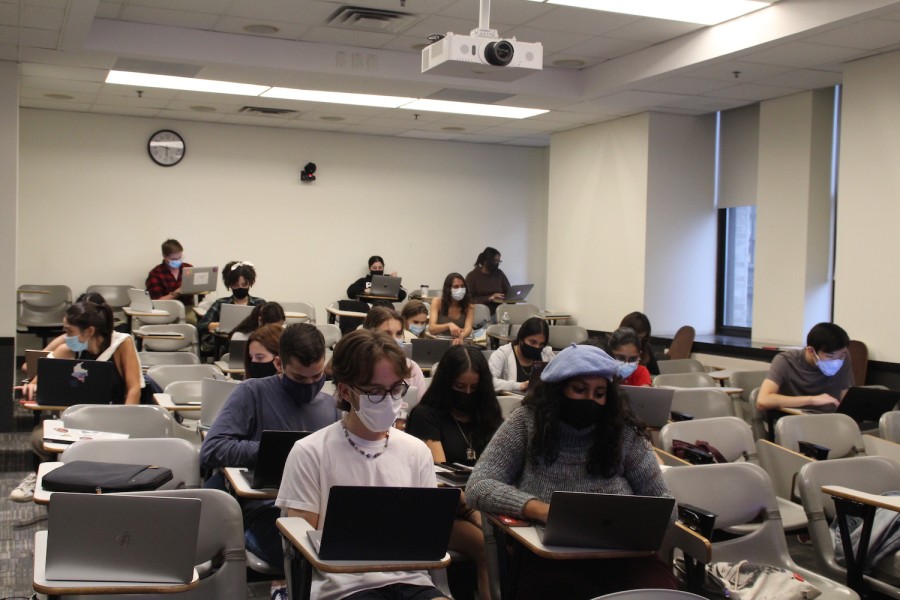Opinion: Stop making classes longer than they need to be
Most NYU classes are 75 minutes long. The ones that are longer shouldn’t be.
(Manaal Shareh for WSN)
March 24, 2023
There’s only one thing worse than sitting in a murky auditorium, listening to a professor lecture for 75 minutes: sitting there for double that time. That’s what I had to do last semester in my first-year seminar, which met once a week for an excruciatingly long, two-and-a-half-hour period. I felt myself zoning out near the halfway mark during every week’s class, no matter how hard I tried to concentrate. Classes longer than the default 75-minute block fail to retain students’ attention, and NYU should avoid them at all costs — if not eliminate them entirely.
Courses at NYU must meet for a minimum of 750 minutes per credit, meaning that a four-credit course requires a total of 3,000 minutes of instructional time — equivalent to 50 hours over a semester. Most classes adhere to the 75-minute time block we know and love, meeting two to three times a week. Others, however, meet for nearly three hours in a single session once a week. These long class periods are detrimental to students’ retention of the material and are, frankly, boring.
Most research suggests that breaking up a lecture with a hands-on, interactive activity every 15 minutes is ideal. This is doable during a 75-minute period, in which one or two volunteer-based activities — whether they entail the professor posing a question to the class or allowing two minutes for students to discuss a quote with their neighbors — are enough to give students a break from all the information they are absorbing. However, there’s only so much professors can do during a three-hour-long class.
I was incredibly interested in the subject matter of my first-year seminar, but even so, I could feel myself getting antsy toward the end of each class. I have two classes that are a similar length this semester, and, in both, I notice a palpable decrease in participation as the hours roll by — every student seems to have the same glossed-over look in their eyes.
Despite my professors’ efforts to break up the time period with questions, breaks, videos and other activities, their efforts simply can’t compete with students’ pent-up energy from hours and hours of sitting. Studies suggest that sitting for more than eight hours a day is harmful for your health, and these long courses already bring us a third of the way there.
There are some classes that need the longer length, such as the labs that accompany chemistry courses or certain workshops offered at the Tisch School of the Arts. Some of these range anywhere from four to six hours. But these are typically hands-on classes, so students are constantly working on something tangible. Lecture style classes are already at a disadvantage when it comes to engagement, and making them longer isn’t helping.
When registering for classes, it might seem appealing to pick a longer class that meets less frequently. It seems like they might be more convenient — as you only have to be somewhere in person half the time — but this is only true in theory. Because longer classes occur fewer times, typically only once a week, it becomes easier to procrastinate on assignments because deadlines are also less frequent. Shorter, more frequent classes let students engage with the material more often.
NYU should consider limiting the majority of its classes to 75 minutes. Lectures are already bad enough — let’s not make them any longer than they need to be.
WSN’s Opinion section strives to publish ideas worth discussing. The views presented in the Opinion section are solely the views of the writer.
Contact Naisha Roy at [email protected].

























































































































































